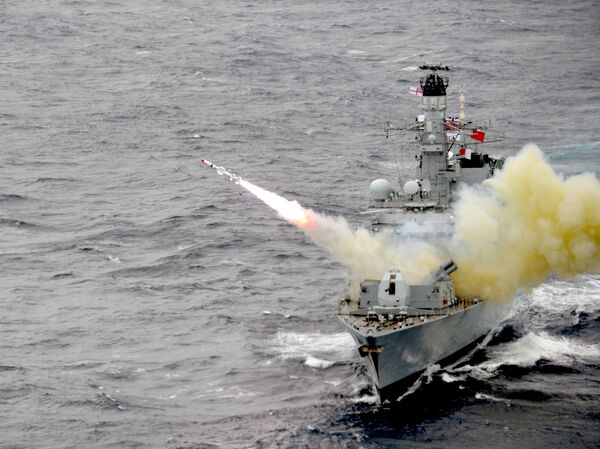
HMS Montrose conducts a Harpoon Block 1C missile firing in May 2013. Harpoon Block 1C will be retired from service at the end of 2023 without immediate replacement. (Royal Navy)
The UK Royal Navy (RN) faces an extended gap in its heavyweight over-the-horizon anti-surface warfare (ASuW) capability after plans for a limited buy of ship-launched anti-ship missile systems was abandoned.
Industry was formally notified by the Ministry of Defence (MoD) earlier this month that the Interim Surface-to-Surface Guided Weapon (I-SSGW) programme had been cancelled. This decision came despite a commitment in the March 2021 Defence Command Paper to procure a replacement for the RN's legacy ship-launched Boeing Harpoon Block 1C missile.
Harpoon Block 1C and its associated GWS 60 ship system are fitted to a number of Type 23 frigates. However, warstock obsolescence means that Harpoon will retired from RN service at the end of 2023.
With a new Future Offensive Surface Weapon (FOSuW) not entering service until the end of the decade at the earliest, the MoD in March 2019 announced its intention to procure an off-the-shelf SSGW to be fitted to five Type 23 frigates. Total programme cost – including missile procurement, inboard equipment, and ship installation and integration – was estimated at around GBP200 million (USD270 million).
The I-SSGW requirement called for a ship-launched over-the-horizon (>200 km) precision anti-ship capability, together with an additional terrain-following precision maritime land attack capability. It further indicated a first delivery of ship-installed equipment by December 2022, with initial missiles to follow by December 2023 commensurate with Harpoon's out of service date.
Looking to read the full article?
Gain unlimited access to Janes news and more...





